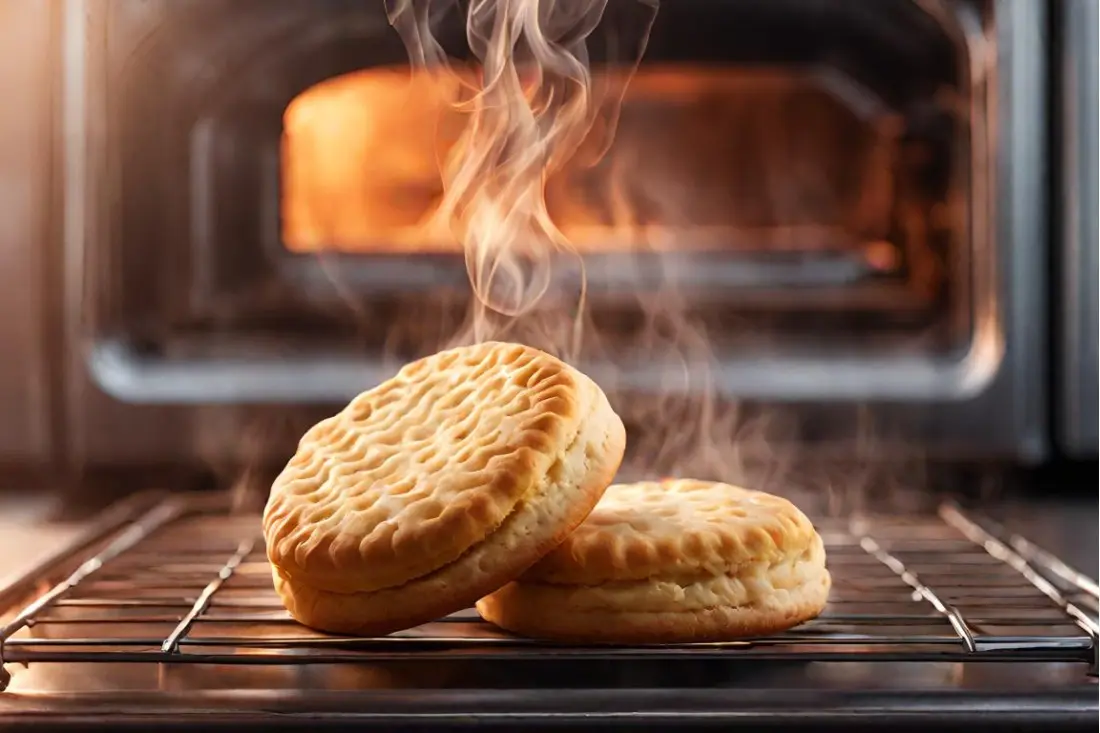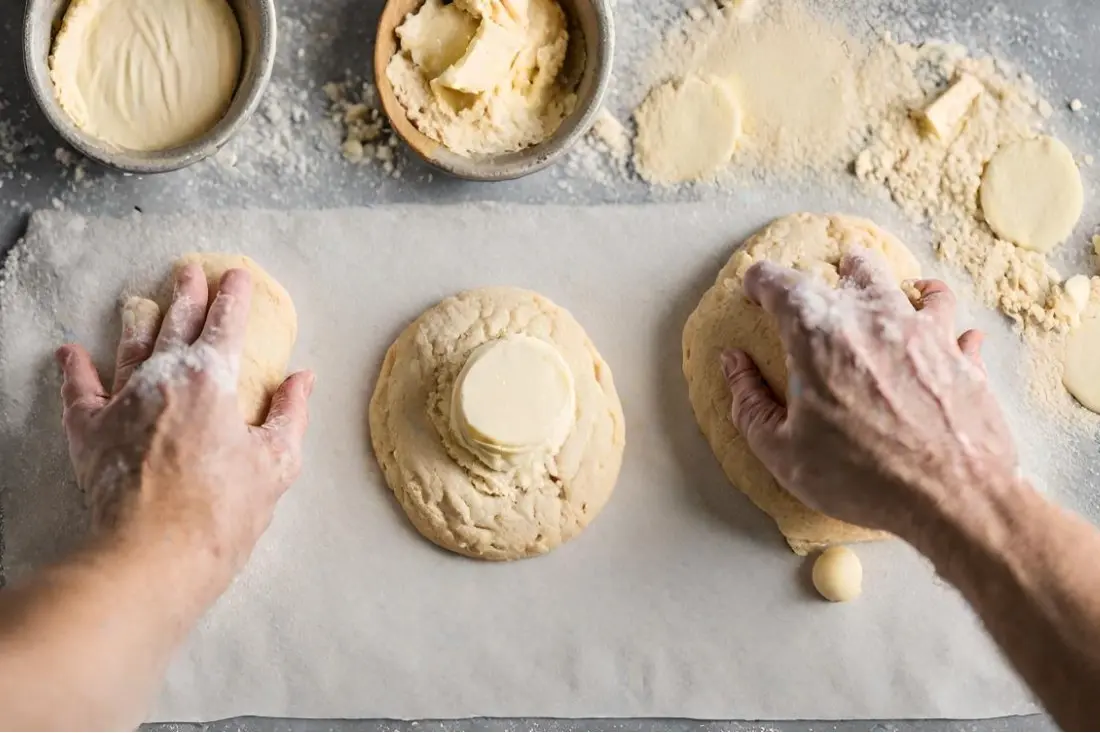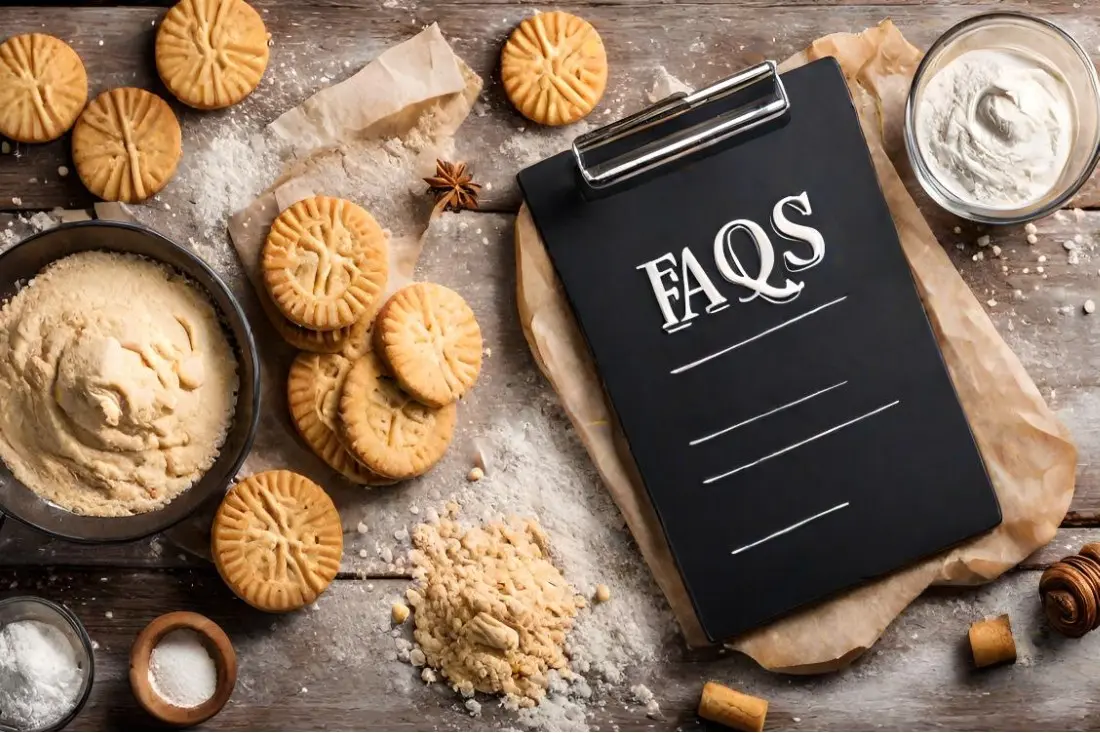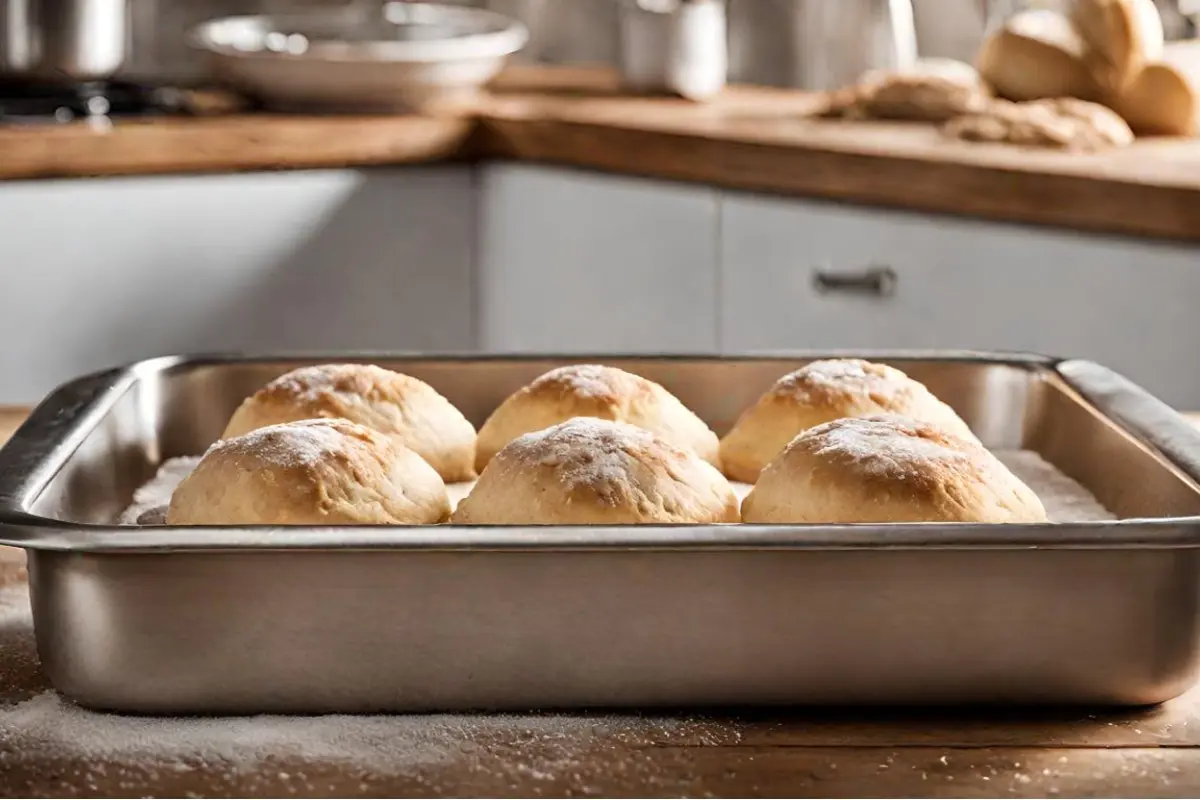Biscuit baking is an age-old culinary art, steeped in tradition and little secrets that turn simple ingredients into delightful treats. One question that often boggles the minds of both novice and seasoned bakers alike is, “Why do you put biscuits close together on a baking pan?” This article delves into this curious aspect of biscuit baking, unraveling the mysteries behind biscuit placement, techniques for achieving that perfect flaky texture, and the common pitfalls to avoid. So, preheat your ovens, and let’s embark on this flour-dusted journey to biscuit perfection.
Introduction to Biscuit Baking
Biscuit baking transcends a mere cooking process; it embodies a dance of precision and instinct. Each step, from mixing to placement on the baking pan, crucially influences the outcome. Therefore, we begin our journey by understanding the necessity of placing biscuits snugly together on the pan.
Biscuits are like delicate flowers in a garden; they need the right environment to flourish. Placing them close together creates a micro-environment where they support each other in raising and maintaining their shape. It’s a subtle yet crucial aspect of baking that ensures your biscuits are not just baked but are baked to perfection.
In this guide, we’ll navigate through the do’s and don’ts, the whys and hows, and everything in between, to transform your biscuit baking from good to great. So, roll up your sleeves, and let’s get baking!
The Science of Baking Biscuits

In baking, comprehending the underlying science elevates your skills significantly. Focusing on biscuits, this science predominantly involves how heat interacts with your dough.
How Biscuits Rise and the Role of Heat
The magic in biscuit baking begins when the heat hits the dough. The butter or fat, strategically left in pea-sized bits, starts to melt. This melting creates steam pockets within the dough, causing it to rise and develop those sought-after flaky layers. It’s a delicate balance – if the fat melts too soon, say goodbye to flakiness!
The Impact of Placing Biscuits Close Together
Now, the intriguing part: why place biscuits close together? When biscuits are nestled close, they provide support to each other during the baking process. This closeness helps each biscuit to rise upwards rather than spread outwards, ensuring a taller, more uniform bake. It’s like a team effort, where each biscuit helps its neighbor to achieve its best potential in terms of rise and texture.
Understanding this science isn’t just baking; it’s crafting with precision and care. Every placement on the pan, and every degree of heat in your oven, contributes to the final, mouth-watering result.
Biscuit Baking Techniques for Best Results

Mastering a few key techniques can significantly improve your chances of baking light, fluffy, and perfectly layered biscuits. Let’s delve into these crucial tactics that can make or break your biscuit-baking adventure.
Importance of Cold Ingredients and Handling
One golden rule in biscuit making is keeping your ingredients cold. This is crucial because the cold fat, when mixed with flour, doesn’t fully integrate. During baking, these little clumps of fat melt, creating steam that leads to those dreamy, flaky layers. So, always start with cold butter and buttermilk, and try not to handle the dough too much, as the warmth from your hands can melt the fat.
Cutting and Shaping Techniques
Cutting the dough correctly is also key. Use a sharp biscuit cutter and press straight down without twisting. Twisting seals the edges, hindering the biscuit from rising beautifully. After cutting, place your biscuits on the baking tray so that they’re just touching each other. This placement not only helps in even baking but also aids in achieving a better rise.
Remember, the art of biscuit baking lies as much in the process as in the ingredients. Gentle handling, precise cutting, and strategic placement on the baking tray are the silent yet significant heroes in the journey to baking the perfect biscuit.
Common Mistakes in Biscuit Baking
Understanding common pitfalls in biscuit baking can greatly enhance your baking success. Let’s explore these mistakes and learn how to avoid them.
Overworking the Dough
Biscuit dough is not like bread or pizza dough; it doesn’t like to be overworked. Excessive kneading or handling warms up the dough, causing the butter to melt prematurely. This can result in biscuits that are tough and dense rather than light and flaky. The trick is to mix just until the ingredients come together – the dough should still have visible flecks of butter.
Incorrect Baking Temperature and Time
Another crucial factor is the baking temperature. Biscuits need a hot oven to ensure a quick rise and to set their structure. Baking at too low a temperature can result in biscuits that are flat and hard. Similarly, overbaking can dry them out, causing them to lose that delightful tenderness. Keep a vigilant eye on the oven temperature and the baking time.
Avoiding these common pitfalls can significantly improve the quality of your biscuits. Remember, in biscuit baking, sometimes less is more – less mixing, less kneading, and careful monitoring of baking time and temperature.
Tips for Fluffy and Flaky Biscuits
Employing the right tips and tricks can make a difference in achieving fluffy and flaky biscuits. Let’s explore some key strategies to help you bake biscuits that will surely impress.
Role of Butter and Buttermilk
The type of fat used in biscuits plays a significant role in their texture. Butter is preferred for its flavor and the ability to create flakiness due to its water content. When this water turns to steam in the oven, it separates the dough into layers, leading to the desired flakiness. Buttermilk, with its acidity, not only adds a subtle tang but also tenderizes the dough, contributing to the biscuits’ fluffy texture.
Techniques for Achieving Perfect Texture
- Cold Fat is Key: Keep your butter and buttermilk cold until the moment they are used. This helps maintain the fat in solid form, which is crucial for flakiness.
- Gentle Mixing: Mix the dough just until the ingredients are combined. Over-mixing can develop gluten, leading to tough biscuits.
- Proper Cutting: When cutting out your biscuits, use a sharp, straight-edged cutter and press straight down without twisting. Twisting seals the edges and hinders rising.
- Baking Close Together: Placing the biscuits close together on the pan helps them rise upwards, not outwards, aiding in achieving a better height.
By keeping these tips in mind, you can transform your biscuit-baking experience and enjoy the delightful results of your efforts – fluffy, flaky, and utterly delicious biscuits.
FAQs on Biscuit Baking

Addressing frequently asked questions in biscuit baking can provide valuable insights to both beginners and seasoned bakers. Let’s tackle some of these questions to enhance your biscuit-baking knowledge.
Q1: How do I ensure my biscuits are fluffy?
- Ensuring your biscuits are fluffy involves using cold fats, gently mixing your dough to just combine the ingredients, and avoiding overworking the dough.
Q2: Why do my biscuits turn out hard?
- Biscuits can turn out hard if the dough is overworked, the fats are too warm, or if they are overbaked. It’s crucial to mix just until the ingredients are combined and bake them at the right temperature.
Q3: Can I use all-purpose flour for biscuits?
- Yes, all-purpose flour is commonly used in biscuit recipes. It has the right balance of gluten to provide structure without making the biscuits too tough.
Q4: Should biscuits touch each other on the baking pan?
- Yes, placing biscuits close together on the baking pan helps them rise upwards and supports their structure during baking.
Q5: Can I freeze biscuit dough for later use?
- Absolutely! Biscuit dough can be frozen. Just cut the biscuits out and freeze them on a baking sheet before transferring them to a freezer bag. You can bake them straight from the freezer, adding a few extra minutes to the baking time.
These FAQs are just the tip of the iceberg, but they provide valuable insights into some of the most common queries related to biscuit baking. Stay tuned as we continue to explore more tips and tricks in the world of biscuits.
Advanced Biscuit Baking Tips
As you become more comfortable with the basics of biscuit baking, elevating your skills with some advanced tips can add a gourmet touch to your homemade biscuits.
Creative Mix-Ins and Variations
Biscuits are a versatile canvas for a wide array of flavors. Consider adding grated cheese, chopped fresh herbs, or even small pieces of cooked bacon for a savory twist. Sweet variations can include a sprinkle of cinnamon or a handful of dried fruit. Remember, the key is to maintain the balance of your dough, so mix-ins should not exceed one-third of the dough’s total volume.
Exploring Different Types of Biscuits
Don’t be afraid to experiment with different biscuit styles. From classic buttermilk biscuits to Southern-style or even drop biscuits, each type offers unique textures and flavors. Exploring these variations can be a delightful journey, expanding your baking repertoire.
As you continue your biscuit-baking journey, remember to see each batch as an opportunity to learn and grow. Don’t let the occasional flop dishearten you; remember, even the most experienced bakers have their off days. Keep practicing, experimenting, and, most importantly, enjoy the process. After all, the journey of baking is as important as the delicious destination you reach.
Exploring Global Biscuit Variations
Biscuits, a staple in many kitchens, vary greatly across different cultures. Embarking on a culinary tour to explore these global biscuit variations offers a delicious insight into different traditions.
American Southern-Style Biscuits
In the United States, particularly in the South, biscuits are fluffy, buttery, and often served with gravy or as a side with meals. They’re a symbol of comfort food, made with buttermilk and baked to golden perfection.
British Scones
Across the pond in the UK, what Americans refer to as biscuits are known as scones. They’re slightly sweeter, and denser, and often enjoyed with clotted cream and jam, particularly during afternoon tea.
Italian Biscotti
In Italy, biscotti are a popular biscuit, known for their crunchy texture. Twice-baked, these biscuits are ideal for dunking in coffee or wine and often contain nuts or dried fruits.
French Sablés
Sablés, originating from France, are a type of shortbread biscuit known for their crumbly texture. Made with butter, flour, and sugar, they’re a simple yet elegant treat often enjoyed with a cup of tea or coffee.
Australian ANZAC Biscuits
A significant part of Australian and New Zealand culinary heritage, ANZAC biscuits were originally made to send to the ANZACs (Australian and New Zealand Army Corps) serving in World War I. These biscuits are made with oats, coconut, and golden syrup, resulting in a chewy and hearty snack.
Exploring these global biscuit variations not only broadens your culinary horizons but also provides a delicious insight into different cultures and traditions. Each biscuit, with its unique history and recipe, tells a story – a story that’s waiting to be discovered in your kitchen.
Pairing and Serving Biscuits Creatively
Thanks to their versatility, you can pair and serve biscuits in numerous creative ways to enhance any meal. Let’s explore some innovative ideas for serving and enjoying biscuits.
Sweet and Savory Toppings
- For Sweet Lovers: Enhance your biscuits with honey, fruit preserves, or a dollop of whipped cream. For a special treat, drizzle them with a simple icing or chocolate sauce.
- For Savory Preferences: Top biscuits with creamy gravy, herbed butter, or a slice of cheese. They also pair wonderfully with scrambled eggs and bacon for a hearty breakfast.
Biscuits as a Base for Sandwiches
Transform biscuits into a base for sandwiches. Start by filling them with sliced ham, roasted turkey, or even a fried chicken piece for a Southern-inspired delicacy. Additionally, for vegetarian options, consider a caprese-style filling with mozzarella, tomato, and basil. Additionally, you can adapt these versatile bases to suit any taste preference, guaranteeing a delightful meal for everyone.
Biscuit-Based Desserts
Crumble biscuits to create a base for desserts like cheesecakes or use them in trifles layered with custard, fruit, and cream. This repurposing gives a delightful texture contrast to these sweet dishes.
Pairing Biscuits with Soups and Stews
Biscuits make a comforting side to soups and stews. Their absorbent nature makes them perfect for sopping up broths and sauces, adding a satisfying element to your meal.
By exploring these various pairing and serving options, biscuits can be transformed into a versatile component of your culinary repertoire. Whether served as a sweet treat or a savory side, biscuits have the potential to elevate the dining experience with their delightful texture and flavor.
Conclusion
Wrapping up our comprehensive guide, it’s evident that biscuit baking involves more than just following a recipe. Firstly, it’s about understanding the nuances of ingredients, then mastering dough-handling techniques, and finally, appreciating the science behind each step.
From the significance of cold fats to the technique of placing biscuits close together on the pan, every detail contributes to the outcome. Whether you’re experimenting with creative mix-ins or sticking to the classic recipe, the joy of biscuit baking lies as much in the process as in the tasting.
Therefore, armed with these tips, tricks, and insights, step into your kitchen with confidence. Moreover, remember that every batch of biscuits is a new adventure, an opportunity to hone your skills and perhaps even discover your unique twist on this timeless treat. In conclusion, happy baking!

